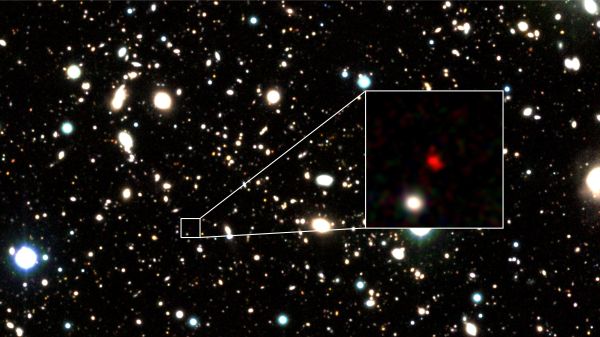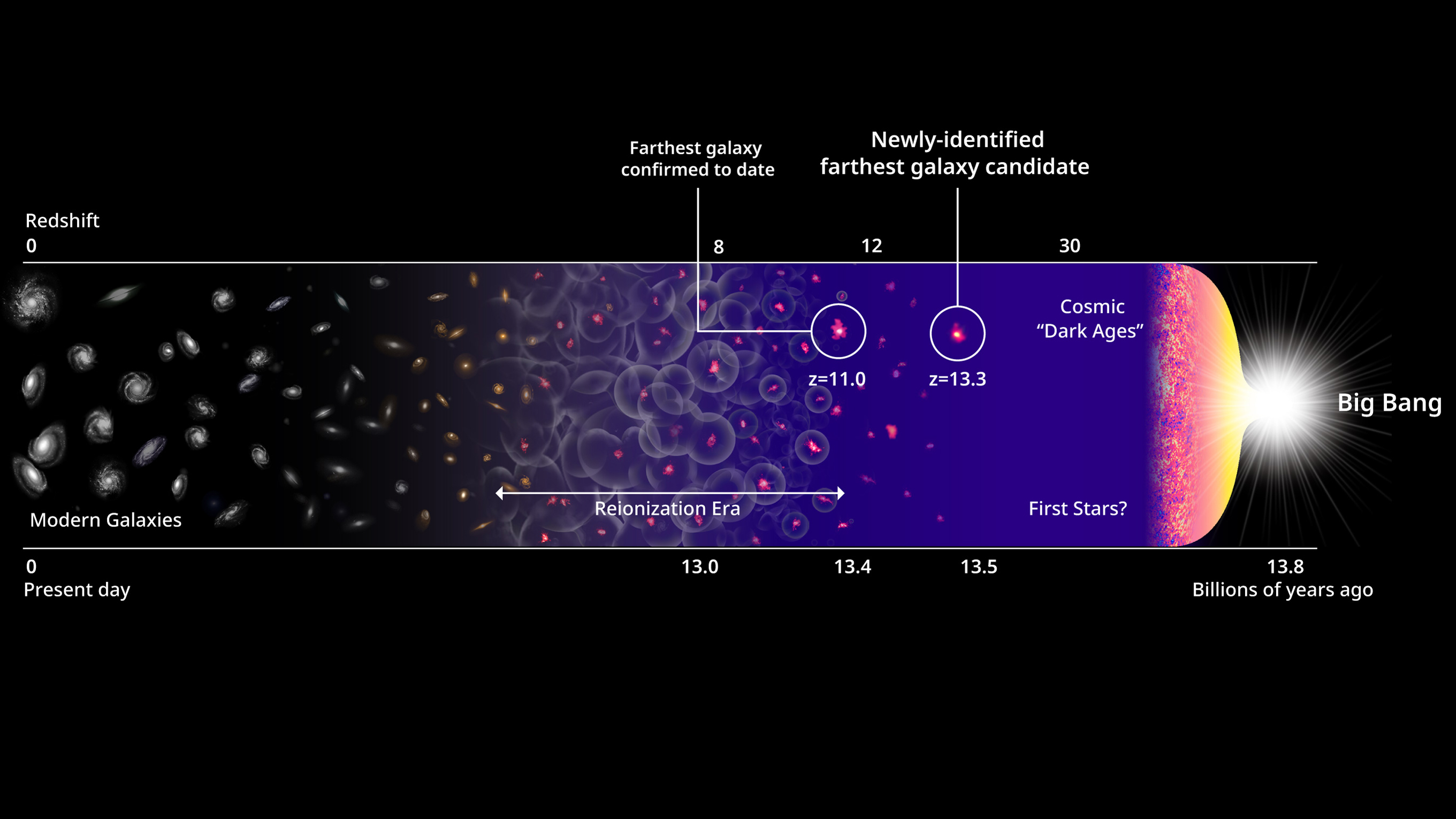Astronomers just discovered the farthest object in the known universe — but what is it?
The massive object is a colossal 13.5 billion light-years away.

A possible galaxy that exists some 13.5 billion light-years from Earth has broken the record for farthest astronomical object ever seen.
That age places this collection of stars, now dubbed HD1, between a time of total darkness — about 14 billion years ago the universe was a blank slate devoid of any stars or galaxies — and one of just-burgeoning lights as clumps of dust and gas were growing into their cosmic destinies.
"The first galaxies formed about a hundred million years after the Big Bang. They were a millionth of the mass of the Milky Way and much denser," study researcher and Harvard astrophysicist Avi Loeb told Live Science in an email. "One way to think of them is as the building blocks in the construction project of present-day galaxies, like our own Milky Way."
But just what is this "object?"
That's a tricky question to answer about something so far away, said Fabio Pacucci, an astronomer at the Harvard–Smithsonian Center for Astrophysics, who likened it to guessing the nationality of a faraway ship from the flag it flies while standing in a dense fog in the middle of a gale, he said in a statement.
Related: What if the universe had no beginning?

The researchers discovered HD1 in data collected over 1,200 hours of observation time using the Subaru Telescope, the VISTA Telescope, the U.K. Infrared Telescope and the Spitzer Space Telescope. They were particularly looking at redshift, a phenomenon in which light waves stretch out or become redder as an object moves away from the observer. In this case, the redshift suggested HD1 was extremely distant.
Sign up for the Live Science daily newsletter now
Get the world’s most fascinating discoveries delivered straight to your inbox.
The researchers found that the red wavelengths were the equivalent to a galaxy located 13.5 billion light-years away.
HD1 also seems to be growing at a feverish rate — about 100 stars each year, or at least 10 times the rate predicted for starburst galaxies that are known to produce stars at an extraordinarily high pace.
These stars were also more massive, brighter (in ultraviolet wavelengths) and hotter than younger stars, the researchers found.
As such, HD1 could be home to the universe's very first stars, called Population III stars; if that identity is verified, this would be the first observation of this type of star, the researchers said. There's also the possibility that HD1 is a supermassive black hole with a mass of about 100 million times that of the sun.
To figure out HD1's true identity, the researchers can look for X-rays, which are emitted as material gets devoured by the gravity of a black hole. "If HD1 is a black hole, we should see X-ray emission from it. If we do not find X-rays, the emission must originate from massive stars," Loeb told Live Science.
Astronomers hope to find more of these early-universe structures with the James Webb Space Telescope, which was launched Dec. 25, 2021 and will search for the oldest objects in the universe.
"Its discovery is good news for the Webb telescope which will likely find many more," Loeb told Live Science. "Finding a mushroom in the periphery of your backyard often implies that there are many more out there."
The discovery should help scientists understand when the first stars and galaxies formed and how they impacted the rest of the universe, Loeb said. "This is a quest for our cosmic roots, as life would not exist without the heavy elements produced by the first stars," Loeb said. "It is the scientific version of the story of genesis: let there be light."
A description of HD1 will be published in the April 8 issue of The Astrophysical Journal; an accompanying paper with some speculation about the identify of HD1 was published online April 1 in the preprint database arXiv and will be published in the Monthly Notices of the Royal Astronomical Society Letters.
Originally published on Live Science.
Jeanna Bryner is managing editor of Scientific American. Previously she was editor in chief of Live Science and, prior to that, an editor at Scholastic's Science World magazine. Bryner has an English degree from Salisbury University, a master's degree in biogeochemistry and environmental sciences from the University of Maryland and a graduate science journalism degree from New York University. She has worked as a biologist in Florida, where she monitored wetlands and did field surveys for endangered species, including the gorgeous Florida Scrub Jay. She also received an ocean sciences journalism fellowship from the Woods Hole Oceanographic Institution. She is a firm believer that science is for everyone and that just about everything can be viewed through the lens of science.









